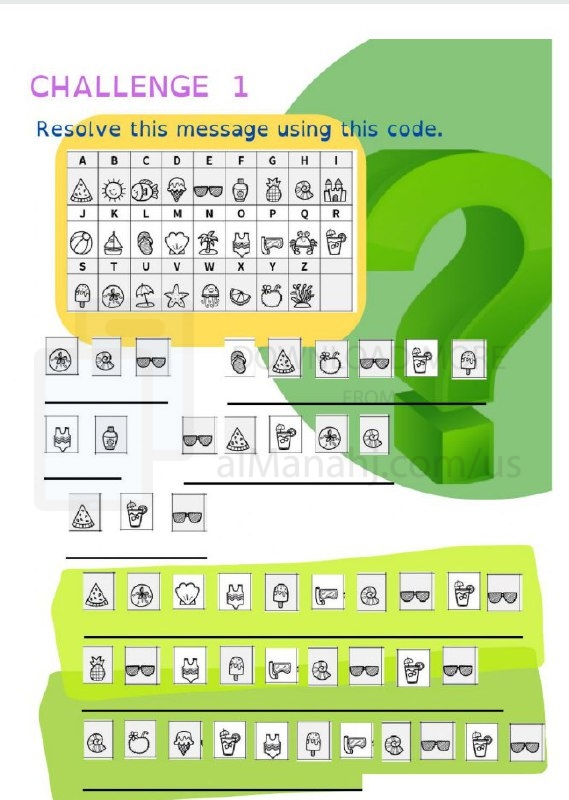| You are here: Almanahj Website ⇒ American curriculum ⇒ 3rd Grade ⇒ Geology ⇒ Term 1 | ||
|---|---|---|
Worksheet about Layers of the earth and water | ||
|---|---|---|
| Subject: Geology | ||
| 3rd Grade | ||
| Term 1 | ||
| Year: 2023/2024 | ||
| Size: 518.8KB | ||
| Number of clicks: 133 | ||
| Publish date:November 24, 2023 | ||
| Added by: Eman | ||
| Last download date: 2024-09-11 04:39:17 | By: theodor rrmc34 | |
| File info: The Earth is composed of several layers, both solid and fluid, which include: 1. Crust: The Earth's outermost layer is called the crust. It is the thinnest layer, ranging from about 5 to 70 kilometers (3 to 43 miles) in thickness. The crust is divided into two types: the continental crust, which forms the continents and is primarily composed of granite rocks, and the oceanic crust, which underlies the ocean basins and is mainly composed of denser basalt rocks. 2. Mantle: The mantle is the layer beneath the crust and extends to a depth of about 2,900 kilometers (1,800 miles). It is predominantly solid, but it can flow over long periods of time under intense heat and pressure. The mantle is composed of silicate minerals rich in iron and magnesium. It is further divided into the upper mantle and the lower mantle. 3. Outer Core: The outer core is a liquid layer located beneath the mantle, extending from about 2,900 to 5,150 kilometers (1,800 to 3,200 miles) in depth. It is primarily made up of molten iron and nickel. The outer core is responsible for generating Earth's magnetic field through a process called the geodynamo. 4. Inner Core: The inner core is the deepest layer of the Earth, spanning from about 5,150 to 6,371 kilometers (3,200 to 3,958 miles) in depth. Despite the immense pressure, the inner core is solid due to the intense heat that prevents it from melting. It consists mainly of solid iron and nickel. Regarding water, it exists in various forms on Earth. The primary water bodies are: 1. Oceans: The Earth's oceans are large bodies of saltwater that cover about 71% of the planet's surface. There are five recognized oceans: the Pacific Ocean, the Atlantic Ocean, the Indian Ocean, the Southern Ocean, and the Arctic Ocean. Oceans play a crucial role in regulating the Earth's climate and are home to a diverse range of marine life. 2. Seas: Seas are smaller bodies of saltwater that are partially enclosed by land. They are usually connected to the oceans and can be either partially or completely surrounded by land. 3. Lakes: Lakes are inland bodies of water that are generally freshwater. They vary in size, from small ponds to large, expansive lakes like the Great Lakes in North America or Lake Baikal in Russia. Lakes are often fed by rivers and streams and can be vital sources of drinking water and habitats for various organisms. 4. Rivers: Rivers are flowing bodies of freshwater that generally originate from mountains or other water sources and flow into lakes, seas, or oceans. They play a significant role in the water cycle, transportation, and the shaping of landscapes. 5. Groundwater: Groundwater refers to water that is stored beneath the Earth's surface in porous rock formations called aquifers. It is an essential source of freshwater for drinking, irrigation, and supporting ecosystems. These are some of the primary layers of the Earth and water bodies found on our planet. | ||
| Downloading link Worksheet about Layers of the earth and water |
|---|
|
1700810542.pdf
The file is being prepared for download
|
| File images |
|---|
 |